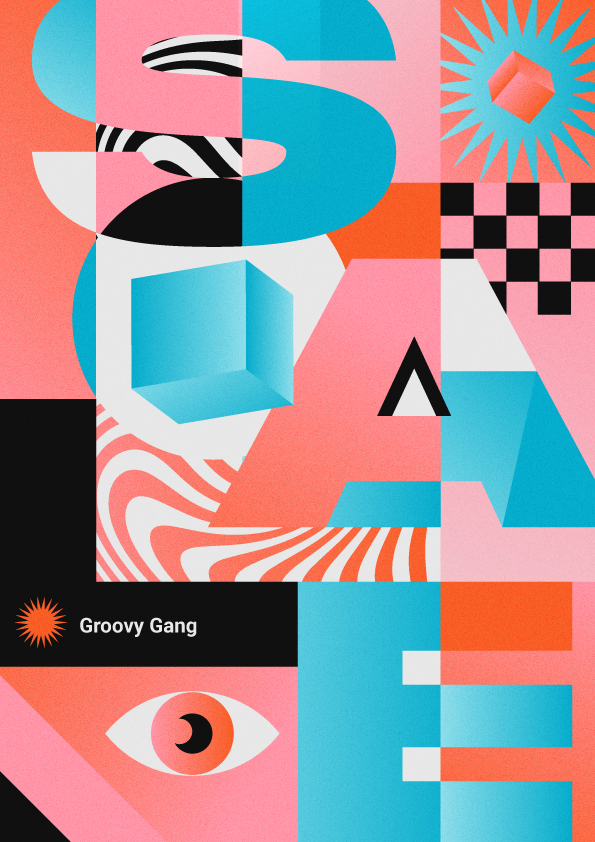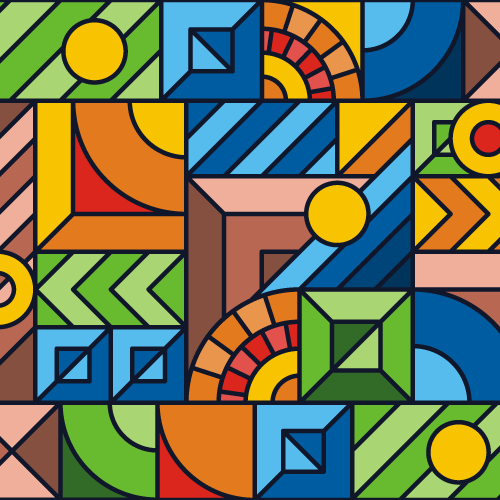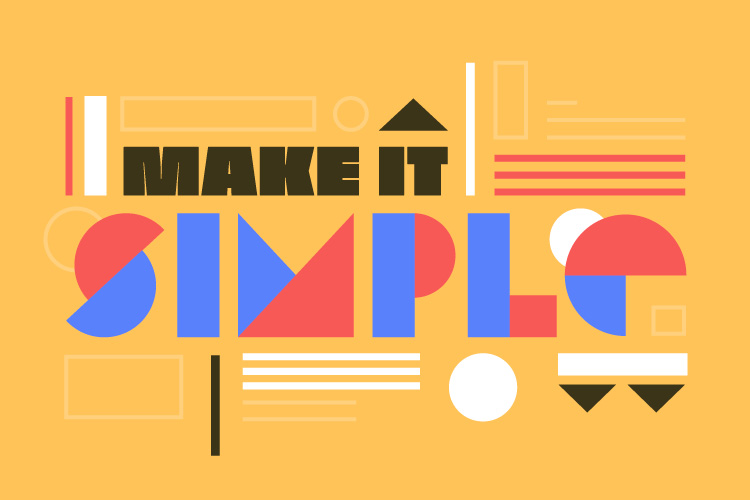Introduction
Cubism in Graphic Design: We set off on a fascinating voyage through the fascinating world of cubism in graphic design in this blog post. We’ll look into the origins, tenets, and amazing development of Cubism in history. Additionally, we’re going to look at how this revolutionary aesthetic continues to influence contemporary design and change the way we perceive visual arrangement.
Join us as we explore the cubist movement’s geometric attraction and see how it revitalizes contemporary graphic design. This journey promises to fire your creative spark and change your approach to visual composition, whether you’re a seasoned designer looking for new ideas or an enthusiastic learner. Let’s begin this insightful journey into “Exploring Cubism in Graphic Design: A Modern Approach to Visual Composition.
Table of Contents
- The Influence of Cubism in Graphic Design: Past and Present Examples
- Applying Cubist Techniques in Contemporary Cubism Graphic Design Projects
- Understanding Cubism’s Core Principles
- Applying Cubist Techniques in Your Projects
- Examples of Contemporary Cubist Design
- Cubism as a Visual Language: Communicating Messages through Cubism in Graphic Design
- Breaking Boundaries with Cubism in Graphic Design: Pushing the Limits of Traditional Graphic Design
- Conclusion: Embracing the Boldness of Cubism in Graphic Design Projects
The Influence of Cubism in Graphic Design: Past and Present Examples
Past Influences:
Cubism emerged as a revolutionary artistic method championed by visionaries such as Pablo Picasso and Georges Braque. His core principles include geometric abstraction, formal deconstruction and the inclusion of multiple perspectives. These principles were once limited to the canvas, but have gradually made their way into graphic design.
Innovative posters, magazine covers, and advertising from the early 20th century all bear Cubist influences. Broken shapes, abstract forms, and the contrasting of various views are all techniques used by artists and designers to communicate ideas and capture the viewer’s attention. This time period saw the introduction of Cubism to the field of graphic design.

Present-Day Expressions:
Fast forward to today, and Cubism’s impact on graphic design remains as relevant as ever. Contemporary designers continue to draw inspiration from Cubist aesthetics to craft visually striking and conceptually rich works of art. Let’s look at some examples to illustrate Cubism’s lasting impact:
Cubist Typography
Graphic designers are using fractured and abstract letterforms inspired by Cubism to create eye-catching typography that adds depth and intrigue to branding, packaging, and digital designs.
Geometric Abstraction
The use of geometric shapes and patterns, a hallmark of Cubism, is prevalent in modern design. This approach can be seen in everything from website backgrounds to infographics.
Collage and Montage
Cubist techniques of deconstruction and reassembly are employed in collage-style designs, particularly in digital and print media, to convey complex narratives or ideas.
Digital Art
The digital age has enabled designers to take Cubism to new heights. Interactive websites and multimedia presentations often incorporate dynamic, shifting perspectives reminiscent of Cubist paintings.
Corporate Identity
Some forward-thinking companies incorporate Cubist elements into their logos and branding, embracing the movement’s sense of innovation and disruption.

Applying Cubist Techniques in Contemporary Cubism Graphic Design Projects
Understanding Cubism’s Core Principles
Before diving into the application of Cubist techniques, it’s essential to grasp the movement’s fundamental principles of cubism in graphic design:
Abstraction: Cubist art often features geometric shapes, including cubes, cones, and pyramids, which can be applied in contemporary design for added depth and visual interest.
Deconstruction of Forms: Cubist artists fragmented objects and subjects into their component parts, allowing designers to break down complex visuals into simpler elements for clarity and impact.
Multiple Perspectives: Incorporating different viewpoints of an object or subject simultaneously can create a sense of dynamism and intrigue in your designs.

Applying Cubist Techniques in Your Projects
Geometric Shapes and Patterns: Infuse your designs with geometric shapes and patterns reminiscent of Cubist art. Use these shapes to frame content, create background elements, or even as the basis for unique typography.
Fragmentation and Reassembly: Like Cubist artists, break down your visuals into pieces and then reassemble them in unexpected ways. This approach can be particularly effective in collage-style designs.
Layering and Transparency: Experiment with layering elements in your designs to create depth and transparency effects. This technique can add complexity and visual interest to otherwise flat compositions.
Juxtaposition of Perspectives: Combine different perspectives of an object or subject within a single design. This can be especially effective in poster art, advertisements, and editorial layouts.
Dynamic Typography: Apply Cubist-inspired typography by deconstructing and rearranging letterforms. This approach can add a unique and artistic touch to branding and promotional materials.
Color Play: Cubist art often featured bold and contrasting colors. Incorporate vibrant color schemes and explore color blocking to draw attention to specific elements in your designs.

Examples of Contemporary Cubist Design
To further illustrate the application of Cubist techniques in contemporary graphic design, here are some real-world examples of cubism in graphic design:
Website Design: Create visually engaging and interactive websites by integrating dynamic, shifting perspectives and geometric elements.
Product Packaging: Use fragmented forms and multiple viewpoints to craft innovative and memorable packaging designs.
Infographics: Simplify complex information by breaking it down into geometric shapes and arranging them in a Cubist-inspired layout.
Artistic Posters: Design posters for events, exhibitions, or promotions using Cubist principles to capture attention and convey a sense of modernity.
Logo Design: Incorporate Cubist aesthetics into logo design to symbolize innovation and creativity for forward-thinking brands.

Cubism as a Visual Language: Communicating Messages through Cubism in Graphic Design
One of the fundamental aspects of Cubism is its ability to break down objects, subjects, or concepts into their constituent parts. This process of fragmentation allows designers to distill intricate information into more manageable and understandable components. For example, in the area of information graphics, cubism style design can be easily converted to content that requires a lot of data into visually appealing and understandable images. By breaking down complex subjects and arranging them in an abstract, Cubist-inspired layout, designers can effectively communicate intricate details without overwhelming the viewer.
Additionally, Cubism in graphic design knack for incorporating multiple perspectives simultaneously lends itself well to conveying nuanced ideas. By juxtaposing different viewpoints within a design, designers can emphasize various aspects of a message or present multiple facets of a story. This strategy works especially well in editorial layouts where multi-layered stories may be communicated through clever placements of text and images.
Breaking Boundaries with Cubism in Graphic Design: Pushing the Limits of Traditional Graphic Design
“Crossing the boundaries of Cubism and breaking through the boundaries of traditional graphic design” means a dynamic departure from traditional graphic design norms. This method, which takes cues from Cubism’s revolutionary mentality, dares break with convention and reshape the visual environment. Cubism pushed the boundaries of conventional shape and perspective and required graphic designers to think creatively. Cubism shattered linear narratives by segmenting, rearranging, and layering materials in unexpected ways, creating a technique to record the invention of the mind. He encouraged designers to embrace the unconventional, adding depth and vibrancy to their work, ultimately creating visual experiences that transcended the boundaries of traditional graphic design. Cubism allows designers to Push boundaries and unleash creativity to create bold designs.

Conclusion: Embracing the Boldness of Cubism in Graphic Design Projects
In conclusion, By incorporating cubism’s geometric abstraction, fragmentation, and numerous viewpoints into your designs, you not only capture the attention of your audience but also give life to your artistic vision. It provides a versatile toolkit of methods to communicate intricate ideas, elicit thought, and leave a lasting impression. Cubism gives you the ability to make designs that are not just physically arresting but also philosophically dense, whether you’re creating a logo, building a website, or illustrating a poster. Therefore, as you set out on your next creative adventure, think about embracing the audacity of Cubism and watch as your creations take on creativity, depth, and a classic artistic edge.
Add a Comment